What We’re Reading: Monthly Comics
Recently, there’s been a lot written about how people currently buy comics and how they should buy them. There are definitely ways to improve the industry, but however things shake out in the future, I hope I’ll still be able to buy monthly comic books.
When I worked in a comic store, I was spending unimaginable amounts of money on the 20- to 64-page comics that are almost inevitably (at least these days) collected into books with spines and distributed to bookstores. It was also a time of frantically following comic news sites, reading interviews, tracking rumors of upcoming books, and participating in the loosely connected nation-states of the comics community.
It was a lot of time and money spent on things I’d eventually get rid of (moving sucks), but even now, years after, I’m still drawn to the occasional serialized comic. Done well, a serialized comic can feed the same hunger that shows like Game of Thrones do—an intense desire to know what happens next coupled with a group of like-minded readers who spin predictions and conspiracy theories about future plotlines. That said, here are a few comics I still anticipate every month.
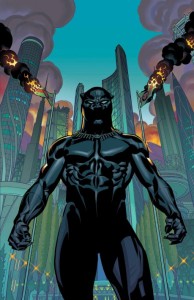 Black Panther by Ta-Nehisi Coates, Brian Stelfreeze, Chris Sprouse, Karl Story, and Laura Martin (Marvel, 2016)
Black Panther by Ta-Nehisi Coates, Brian Stelfreeze, Chris Sprouse, Karl Story, and Laura Martin (Marvel, 2016)
I’m always intrigued when prose writers move to comics. Sometimes, I like their comics more than I like their prose. (I’m looking at you, Jonathan Lethem.) Sometimes, it’s so bad that future writers ignore or actively overturn the stories. (Sorry, Orscon Scott Card.) And sometimes, the transition is seamless.
Black Panther is one of those times. The book leaps from one genre to another: tense political thriller, magical realist family saga, and two-fisted superhero action are all woven together to create a slow-burning story of a king and his people.
Stelfreeze’s art is sharp, and his storytelling is clear, which is key when dealing with an ensemble cast. His designs for the Black Panther’s home country of Wakanda—its clothing, its landscape, and its cities—are impeccable. And the colors by Laura Martin are painstakingly applied, supplying an important emotional subtext to the big, black swaths of Stelfreeze’s ink. (And she’s not afraid to go big and bright, which is a welcome change in an era of often brown and gray superhero comics.)
My favorite storyline follows the struggles of Aneka and Ayo, disillusioned royal guards who have taken it upon themselves to help their countrymen whether their king wills it or no. These soldiers/rebels/lovers get all the best lines:
And when all hope is lost, when they become traitors to their king for the greater good, and they’re geared up for full-on insurrection…
Which just makes me even more excited for the upcoming World of Wakanda spinoff written by Roxanne Gay and Yona Harvey. Whaaaaat?
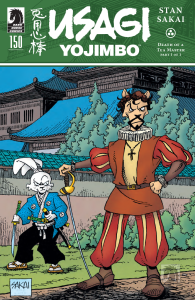 Usagi Yojimbo by Stan Sakai (Dark Horse, 2016)
Usagi Yojimbo by Stan Sakai (Dark Horse, 2016)
Usagi Yojimbo, I will never quit you.
Usagi outlasted the black-and-white fighting animal comic craze of the ‘80s, running for over 200 issues and over 30 years. The historically accurate samurai rabbit outlasted ninja turtles, barbarian aardvarks, kung fu kangaroos, and black belt hamsters. After an extended break, Sakai is back, and the recent stretch of Usagi Yojimbo carries a kind of hardscrabble sadness that was absent the previous volumes.
His ink lines are scratchier now, and his protagonist seems weary and pragmatic. The book’s exploration of feudal Japanese culture, previous celebratory and meditative, have started to show cracks in the seams—Europeans are arriving in Usagi’s Japan, and their disdain for samurai culture feels ominous and fatal.
So the question is, will the dissolution of samurai culture mean the dissolution of Usagi as a character? The next few years of the comic could well be the most interesting chunk of this samurai epic, with Sakai at the top of his cartooning game, and his characters mired in world-changing historical events.
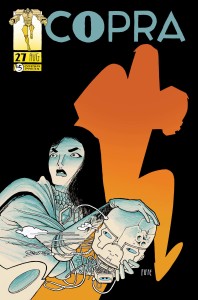 Copra by Michel Fiffe (self-published, 2016)
Copra by Michel Fiffe (self-published, 2016)
Copra is movement. Copra is impressionistic. Copra is a sherbet smear dragged by a sci-fi asteroid after a celestial collision with a planet made of compacted 1980s action movie VHS tapes. Copra is superhero espionage vaulted into cosmic conflict.
One of the most engaging things about shared universes, whether it’s Star Wars, Buffy, or Marvel’s superhero universe, is how details slowly accrete. Writer A creates Character A, Writer B creates Setting B, and then Writer C gracefully combines them in a way that elevates both in a kind of existential cool alchemy.
But in a vast, ever-changing setting like Star Wars or Marvel, those combined details end up being stupid as often as they’re cool. The beauty of Copra comes from the singular mind behind the book: Michel Fiffe.
He’s woven the best superhero tropes, archetypes, and storytelling techniques into one of the most kinetic and visceral comics coming out today. Copra is a team of ne’er-do-wells along the lines of the Suicide Squad blackmailed into working with a master magician a la Dr. Strange, and they’re being drawn into an interdimensional conflict combining the bombast of Jack Kirby and the twisted vectors of Steve Ditko.
But Copra is more than homage. It has an intensely personal feeling—it’s a world of people who’ve been beaten, who’ve made bad choices, and who are constantly walking the line between giving in and rising above. Fiffe talks a lot about how Copra is an exercise of discipline for him—don’t stop moving, keep making pages, and never look back. And the characters of Copra feel the same; they’re sharks, and if they stop moving, they’re dead in the water. So they’re always taking one more mission.
Readers: what do you look for in serial fiction? Cliffhangers? Community? Something else?

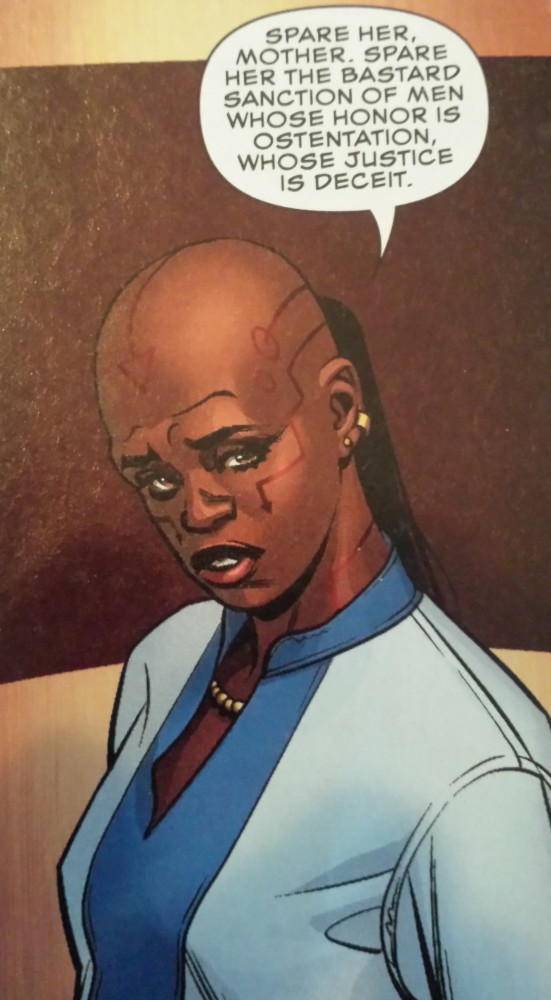
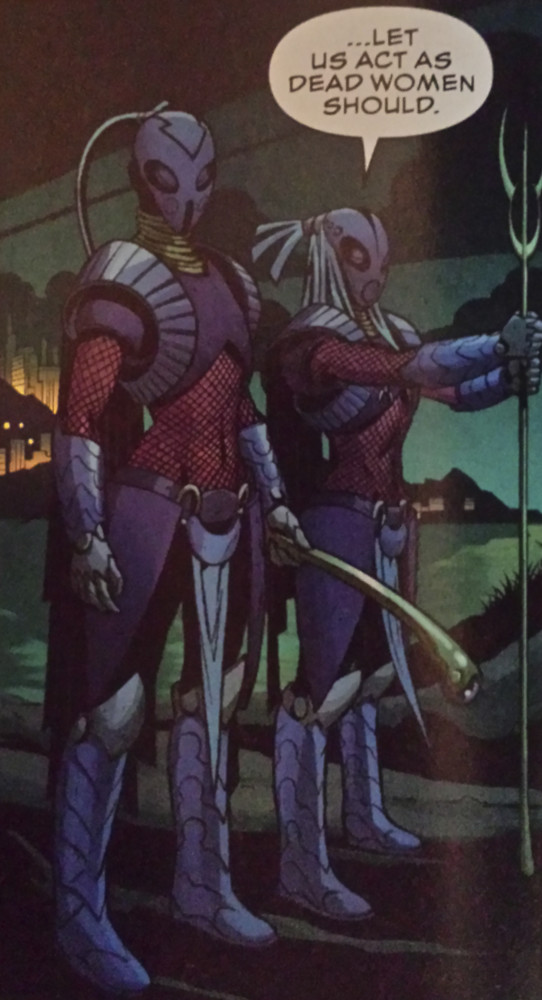
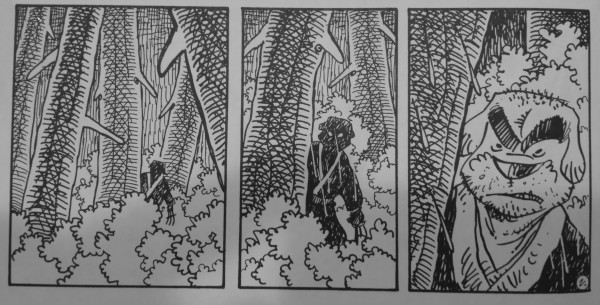






Trackbacks and Pingbacks
Comments are closed.